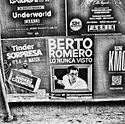I am planning on doing some night shooting with Fomapan 200 creative and was tossing around the idea of pushing it to 400. However, the only thing the Foma site says about pushing is:
"Its wide exposure latitude allows exposures in the speed range from ISO 100/21° to 800/30° without change of development time."
I am having a hard time wrapping my head around that bit of info especially when the technical data sheet doesn't address pushing or pulling that I can find. I am assuming they are speaking to keeping the development time consistent and changing the developer temperature.
The quote refers not to "pushing" but simply to the exposure latitude of the film (one stop over two stops under from box speed) without changing development (neither time nor temperature). Exposure latitude in practice depends on the lighting/contrast range of the subject and the way you meter. Latitude is usually wider with flat subjects and narrower with high contrast subjects.
Now, "pushing" is something different, as it generally means you underexpose (in relation to box speed) and (partially) compensate for that underexposure by prolonging development. This will (depending on film and developer) lead to a slight increase in usable film speed at the expense of increased contrast, which can show as burnt out highlights and loss of shadow detail when dealing with high contrast subjects. You would for example set the meter at 400 instead 200, push development, and as a result get midtones about where they would have been with 200 and normal development, some loss of shadow detail (depending on contrast range of subject, slightly offset by increased development) and higher densities in the highlights with possible loss of highlight detail (depending on contrast range of subject)
The curves in the Fomapan data sheet give a very good idea of how the film reacts to prolonged development in a variety of developers. They show the contrast (gamma) and practical film speed (and base fog) in relation to development time.
For example, look at the Excel/Xtol curve. It tells you that at 6 minutes (20 C), you will have a speed of EI 160 and a gamma (= contrast) of about 0.6 ("normal"). When you follow this curve to the right you will see that when prolonging ("pushing") development to 7, 8 or 9 minutes, the gamma continues to rise (9 minutes = 0.8), but at the same time the film speed will not improve very much (about 1/6 of a stop), as the speed graph ("S") flattens. So you can deduct that "pushing" this film in this developer will not lead to any speed gain, just an increase in contrast.
Now, for comparison, look at the Microphen curve on the same data sheet. At 6 min (20 C), again you get a practical speed of EI 160 and a gamma of about 0.6, quite similar to Xtol. However, the film reacts differently to pushing in this developer. When you follow the curves to the right you realize that prolonged development not only raises the contrast curve, but also the speed graph, which means it gives a slight boost in film speed. At 9 minutes you have reached EI200 (1/3 stop speed gain) at the expense of contrast, of course, which has risen to 0.8
You can also see from the curves that D76/ID-11 does not give the best speed for this film. A contrast of 0.6 will yield only EI 125.
Would I be better off, in this instance, taking night shots at 200 and dealing with very long exposure times?
Yes. You can find info on the reciprocity behavior of this film in the Foma product catalog (it is available on the web in PDF format).
I will quote the data from the table here for your convenience:
200 Creative 1 s: 3x - 1,5 (stops); 10 s: 9x -3 (stops); 100 s: 18x -4 (stops)
As always, YMMV, so some testing is advisable before doing important work










